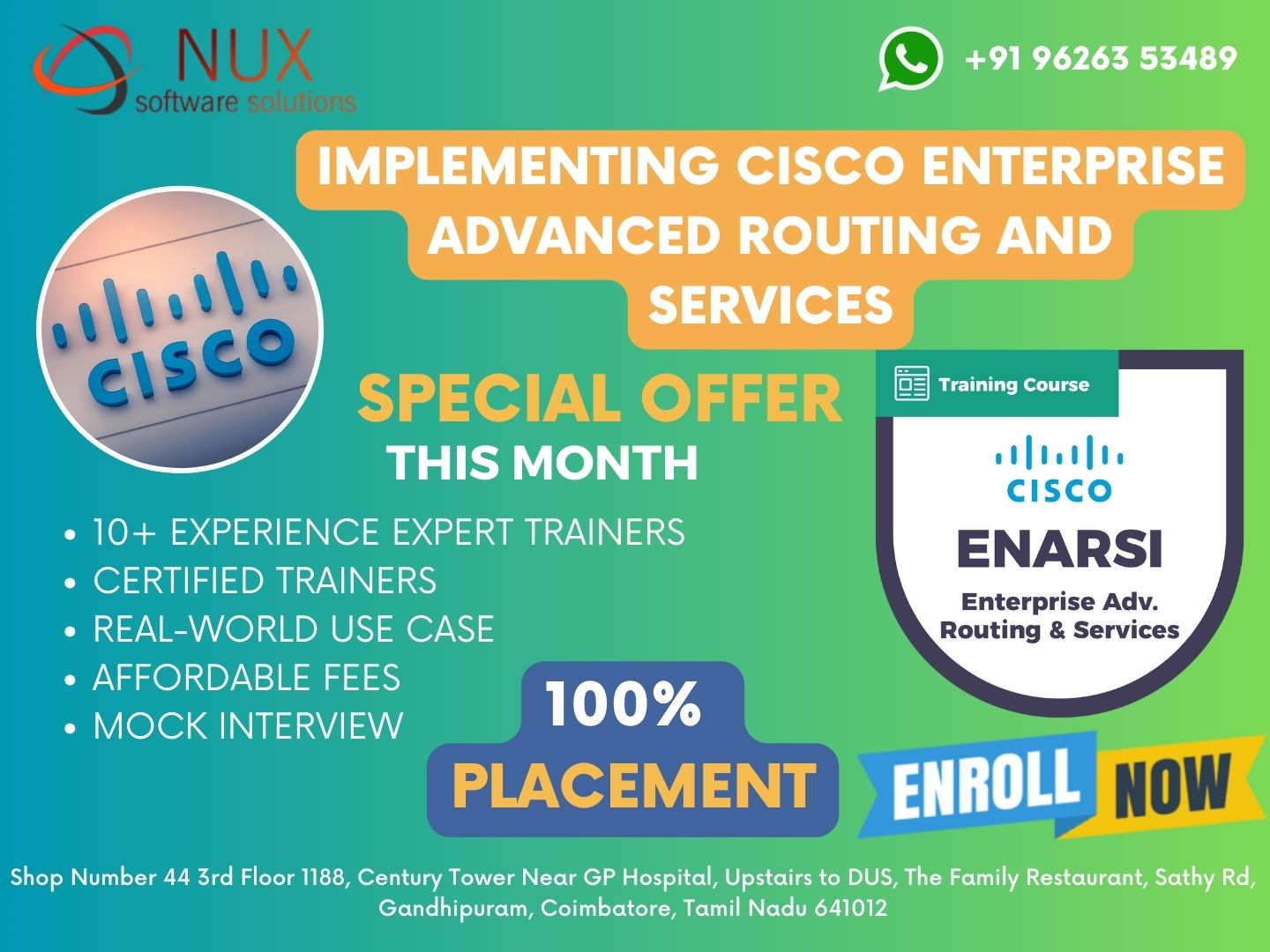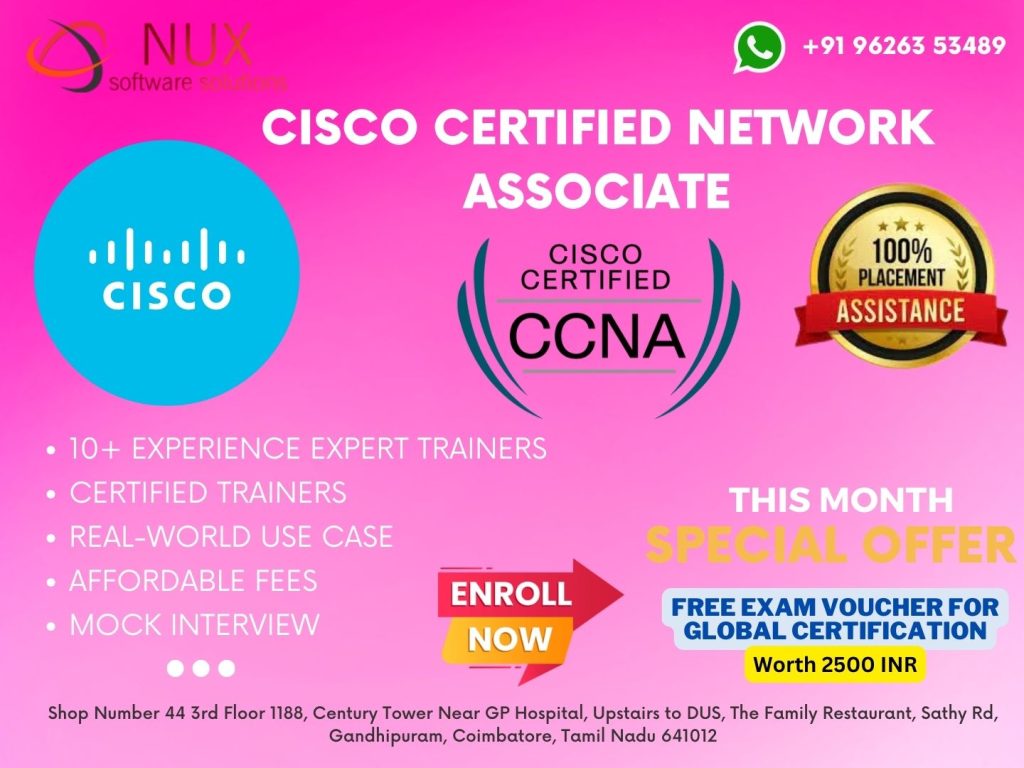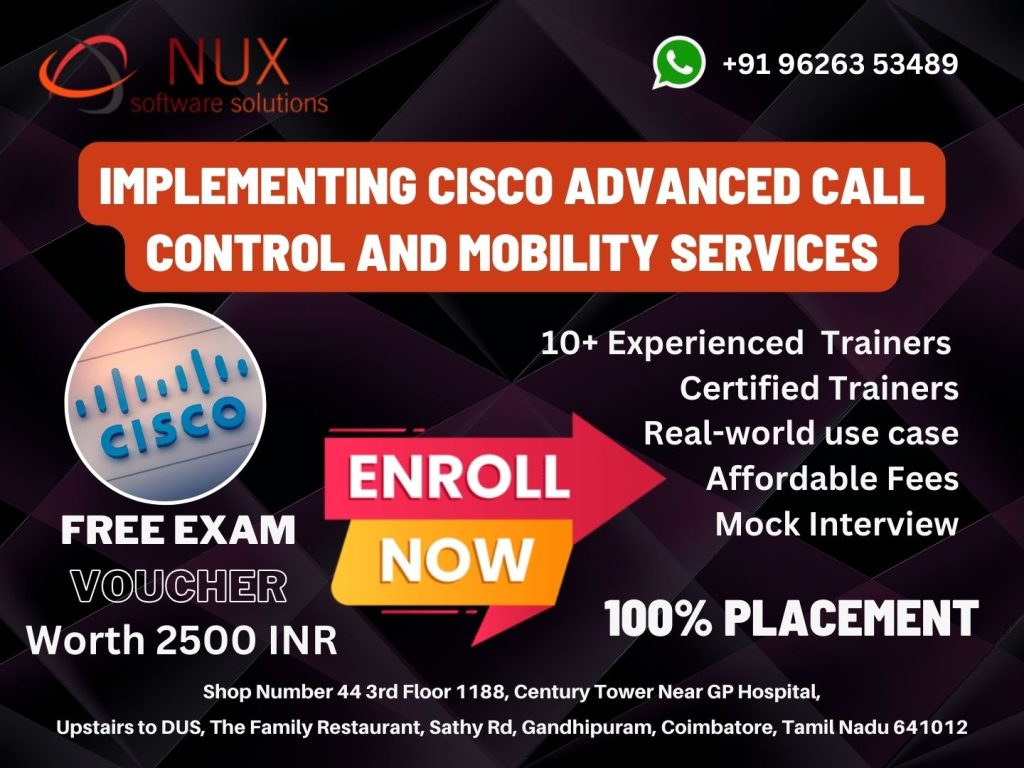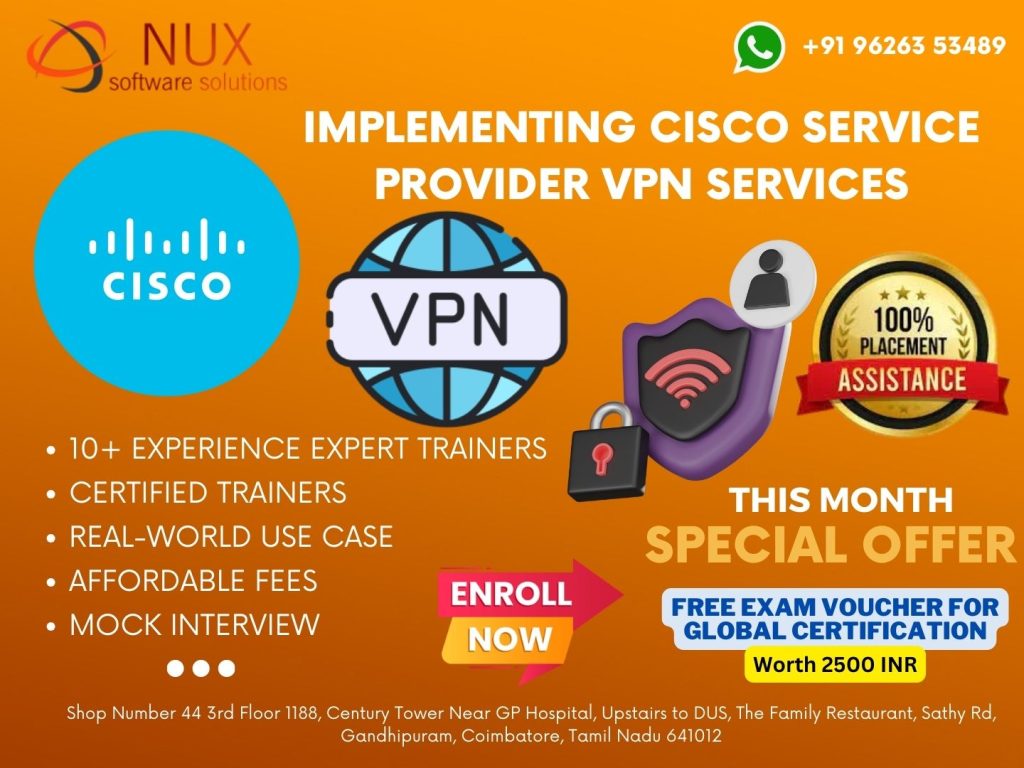Implementing Cisco Enterprise Advanced Routing and Services (ENARSI) (300-410)

Implementing Cisco Enterprise Advanced Routing and Services (ENARSI) – 300-410 Training in Coimbatore
Course Overview
The Implementing Cisco Enterprise Advanced Routing and Services (ENARSI) course is designed for network professionals who want to develop advanced routing skills to configure and troubleshoot enterprise networks. This in-depth training builds on foundational knowledge and focuses on complex network solutions, including advanced Layer 3 routing, VPNs, infrastructure security, and services.
At Linux Training Center in Coimbatore, our ENARSI training is structured to provide practical expertise with real-world Cisco hardware and virtual labs. Whether you’re aiming to upgrade your skills or prepare for advanced job roles, this course will deepen your understanding of enterprise routing technologies and service implementations.
ENARSI is ideal for professionals looking to strengthen their core routing capabilities in preparation for advanced enterprise roles or certifications like CCNP Enterprise and CCIE Enterprise Infrastructure.
Who Should Enroll?
Network Engineers with basic routing knowledge
CCNA-certified professionals aiming to specialize
IT administrators managing enterprise network environments
Infrastructure specialists preparing for CCNP Enterprise
Cisco learners interested in deeper troubleshooting and Layer 3 networking
What You Will Learn
This course delivers advanced skills in routing protocol implementation, troubleshooting, and network services. Key topics include:
Implementing and troubleshooting EIGRP, OSPF, and BGP
Configuring redistribution and route maps
Troubleshooting routing loops and network convergence issues
Implementing VPN technologies including DMVPN, MPLS Layer 3 VPNs, and GRE
Secure routing with control plane protocols and infrastructure security
Implementing and verifying IPv4 and IPv6 filtering
High availability and resiliency features
Network management protocols and service-level awareness
Training includes guided hands-on labs and real-time troubleshooting scenarios to ensure candidates gain job-ready experience.
Career Outcomes After ENARSI
Completing ENARSI training boosts your credentials for multiple mid-to-senior-level networking roles, such as:
Enterprise Network Engineer
Routing and Switching Specialist
Cisco Network Engineer
Infrastructure Support Engineer
Network Operations Specialist
It also positions you well for CCNP Enterprise certification, where ENARSI acts as a recommended concentration exam.
Why Choose Linux Training Center, Coimbatore?
Cisco-certified trainers with deep enterprise experience
Hands-on labs with live routers, switches, and simulation tools
Real-world use cases and troubleshooting-focused training
Custom learning paths tailored for CCNP and network career goals
Flexible schedules – weekdays, weekends, and online sessions
Structured learning environment with small batch sizes
Advance your Cisco networking skills and become an enterprise routing expert with Linux Training Center’s ENARSI program.
Implementing Cisco Enterprise Advanced Routing and Services (ENARSI) (300-410) Syllabus
Layer 3 Technologies - 35%
1. Troubleshoot administrative distance (all routing protocols)
2. Troubleshoot route map for any routing protocol (attributes, tagging, filtering)
3. Troubleshoot loop prevention mechanisms (filtering, tagging, split horizon, route poisoning)
4. Troubleshoot redistribution between any routing protocols or routing sources
5. Troubleshoot manual and auto-summarization with any routing protocol
6. Configure and verify policy-based routing
7. Configure and verify VRF-Lite
8. Describe Bidirectional Forwarding Detection
9. Troubleshoot EIGRP (classic and named mode)
Address families (IPv4, IPv6)
Neighbor relationship and authentication
Loop-free path selections (RD, FD, FC, successor, feasible successor, stuck in active)
Stubs
Load balancing (equal and unequal cost)
Metrics
10. Troubleshoot OSPF (v2/v3)
- Address families (IPv4, IPv6)
- Neighbor relationship and authentication
- Network types, area types, and router types
Point-to-point, multipoint, broadcast, nonbroadcast
(ii) Area type: backbone, normal, transit, stub, NSSA, totally stub
(iii) Internal router, backbone router, ABR, ASBR
(iv) Virtual link
- Path preference
11. Troubleshoot BGP (Internal and External)
Address families (IPv4, IPv6)
Neighbor relationship and authentication (next-hop, mulithop, 4-byte AS, private AS, route refresh, synchronization, operation, peer group, states and timers)
Path preference (attributes and best-path)
Route reflector (excluding multiple route reflectors, confederations, dynamic peer)
Policies (inbound/outbound filtering, path manipulation)
VPN Technologies - 20%
1. Describe MPLS operations (LSR, LDP, label switching, LSP)
2. Describe MPLS Layer 3 VPN
3. Configure and verify DMVPN (single hub)
GRE/mGRE
NHRP
IPsec
Dynamic neighbor
Spoke-to-spoke
Infrastructure Security - 20%
1. Troubleshoot device security using IOS AAA (TACACS+, RADIUS, local database)
2. Troubleshoot router security features
IPv4 access control lists (standard, extended, time-based)
IPv6 traffic filter
Unicast reverse path forwarding (uRPF)
3. Troubleshoot control plane policing (CoPP) (Telnet, SSH, HTTP(S), SNMP, EIGRP, OSPF, BGP)
4. Describe IPv6 First Hop security features (RA guard, DHCP guard, binding table, ND inspection/snooping, source guard)
Infrastructure Services - 25%
1. Troubleshoot device management
Console and VTY
Telnet, HTTP, HTTPS, SSH, SCP
(T)FTP
2. Troubleshoot SNMP (v2c, v3)
3. Troubleshoot network problems using logging (local, syslog, debugs, conditional debugs, timestamps)
4. Troubleshoot IPv4 and IPv6 DHCP (DHCP client, IOS DHCP server, DHCP relay, DHCP options)
5. Troubleshoot network performance issues using IP SLA (jitter, tracking objects, delay, connectivity)
6. Troubleshoot NetFlow (v5, v9, flexible NetFlow)
7. Troubleshoot network problems using Cisco DNA Center assurance (connectivity, monitoring, device health, network health)



